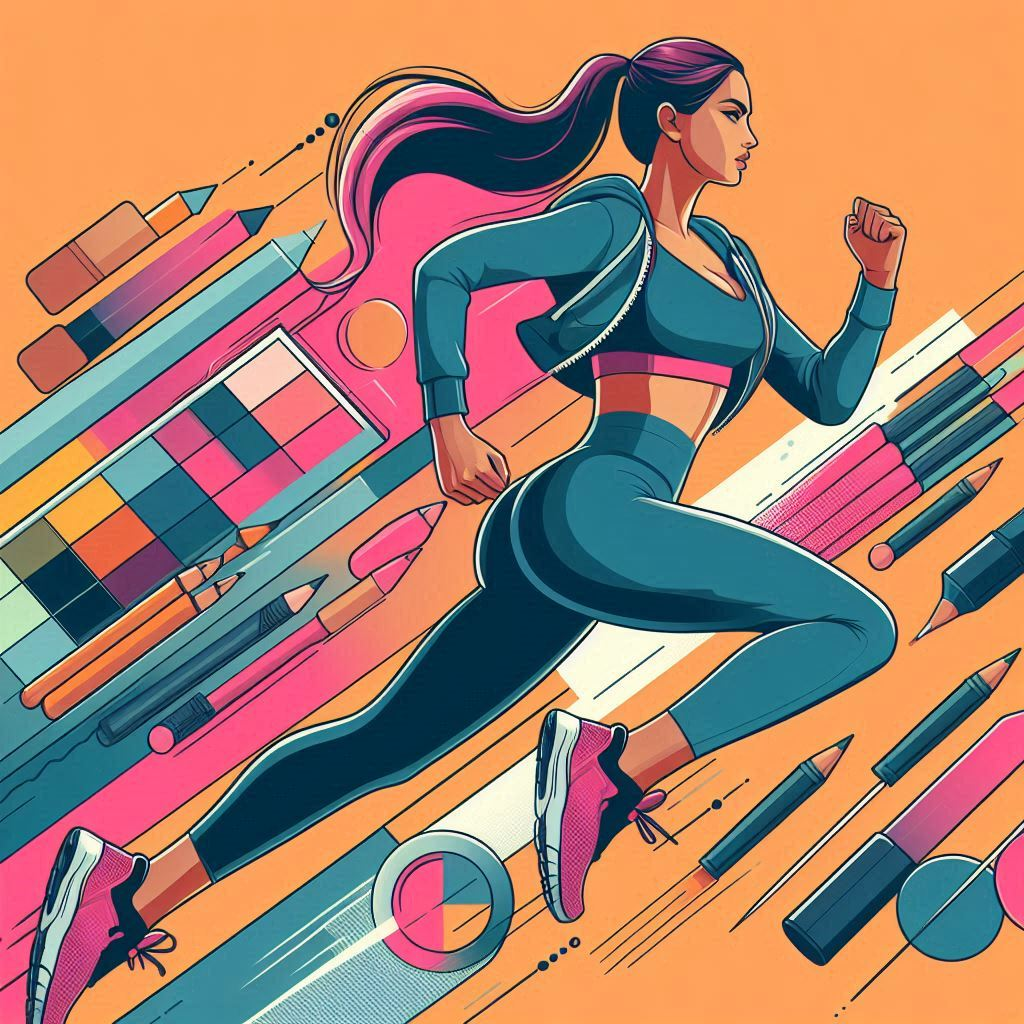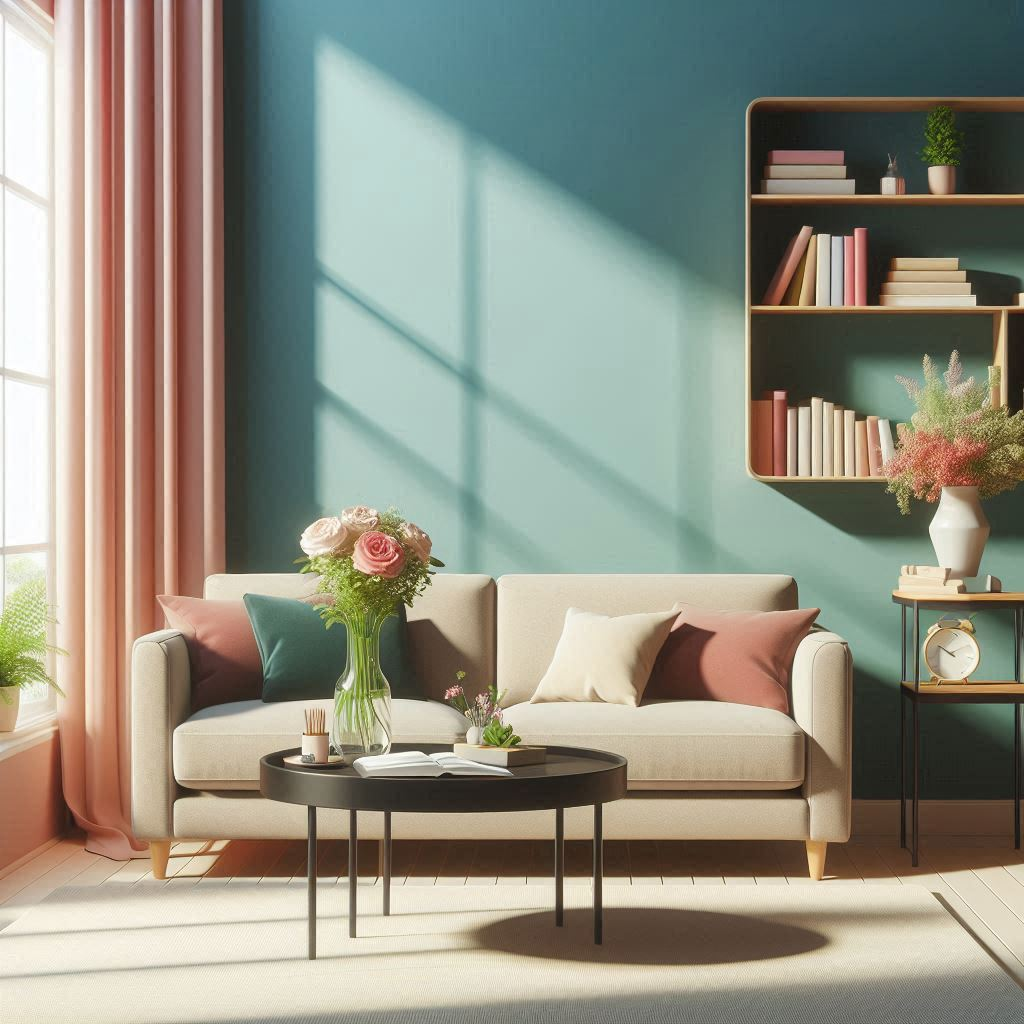In a world characterized by constant change and excess, minimalism in fashion offers a breath of fresh air, a return to the essence of style. The concept of “less is more” isn’t just a fashion trend; it’s a philosophy that emphasizes simplicity, functionality, and the power of well-chosen pieces. In this article, we delve into the beauty of minimalism in fashion, uncovering the principles that guide it, and understanding how this timeless approach is not just a style statement but a way of life.
The Elegance of Minimalism
Minimalism in fashion is a philosophy that redefines the very essence of style. It centers around the belief that elegance and beauty can be distilled to their purest form through simplicity. The minimalist wardrobe isn’t a barren landscape; rather, it’s a curated collection where each item is carefully chosen to resonate with an individual’s unique style and values. It’s about recognizing that an abundance of clothing doesn’t necessarily equate to a wealth of style, but that a well-considered, compact wardrobe can be the ultimate source of elegance.
At the core of minimalism in fashion is the notion of quality triumphing over quantity. It encourages the selection of high-quality, enduring pieces over fleeting trends. The minimalist wardrobe is designed to stand the test of time, not to be overshadowed by the transience of fashion fads. Each piece within this carefully chosen collection is more than just clothing; it’s a functional work of art, selected with intention to serve a purpose and to elevate the wearer’s experience of style. Minimalism isn’t a rejection of fashion; it’s a profound appreciation of the essence of fashion itself.
A Brief History of Minimalism in Fashion
The roots of minimalism in fashion can be traced back to the mid-20th century, and it was significantly influenced by the simplicity and functionality of Japanese design. The Japanese aesthetic, often characterized by clean lines, understated elegance, and an emphasis on the essential, served as a source of inspiration for the emergence of this movement. Pioneering designers like Yohji Yamamoto and Rei Kawakubo of Comme des Garçons played a pivotal role in challenging the ostentatious excesses that had permeated the fashion world. Their creations featured garments devoid of unnecessary embellishments, favoring a more restrained and purposeful approach to design.
The 1990s marked a pivotal moment for minimalism’s global recognition, particularly in the Western fashion landscape. Renowned designers like Calvin Klein and Jil Sander led the charge in popularizing minimalism by embracing clean lines, neutral color palettes, and an unadorned aesthetic. This shift away from the ostentatious marked the beginning of a profound transformation in the fashion industry. Minimalism, once seen as a niche approach, was gradually embraced by a broader audience, and it set the stage for a shift towards timeless, versatile fashion that transcended the ever-changing tides of trends and fads. The impact of these designers on the fashion world was profound, and their influence continues to be felt in contemporary fashion, where simplicity, functionality, and quality remain key tenets of the minimalist philosophy.
Principles of Minimalism in Fashion
Minimalism in fashion is guided by several core principles that extend beyond the realm of clothing. These principles include:
Simplicity: The essence of minimalism is simplicity. It’s about eliminating excess, focusing on clean lines, and removing all superfluous details. A minimalist wardrobe features garments with uncluttered designs.
Quality over Quantity: Minimalists believe in investing in high-quality, timeless pieces that will stand the test of time. A few well-crafted items can replace a multitude of fast fashion choices.
Versatility: Minimalist fashion embraces versatility. A minimalist piece should be adaptable and capable of being styled in various ways. This approach leads to less waste and more creative dressing.
Neutral Color Palettes: Neutral colors like black, white, gray, and beige dominate the minimalist wardrobe. They provide a timeless backdrop for mixing and matching pieces effortlessly.
Functionality: Minimalist fashion focuses on the functional aspect of clothing. Every piece must serve a practical purpose and provide comfort and ease of movement.
Mindful Consumption: Minimalists practice mindful consumption, which means being intentional about what you buy. The emphasis is on buying what you need and what aligns with your style.
The Minimalist Wardrobe
Building a minimalist wardrobe is an art form in itself. It’s about curating a collection of clothing that epitomizes your style, suits your lifestyle, and is devoid of clutter. A few key components of a minimalist wardrobe include:
The Capsule Wardrobe: A capsule wardrobe is a small, curated collection of essential clothing items that can be mixed and matched to create various outfits. It typically consists of versatile pieces like a white button-down shirt, a well-fitting pair of jeans, a tailored blazer, and comfortable sneakers.
Quality Basics: Minimalism doesn’t mean you need to sacrifice style. It means investing in high-quality basics like a classic trench coat, a cashmere sweater, and leather loafers. These timeless pieces form the backbone of your wardrobe.
Neutral Colors: The minimalist palette usually consists of neutral colors, making it easy to pair and layer pieces. Black, white, gray, and beige are common choices.
Statement Pieces: While minimalism leans towards simplicity, it doesn’t exclude the inclusion of statement pieces. These can be bold accessories or unique garments that add character to your wardrobe.
Minimal Footwear: A minimalist shoe collection might include comfortable, versatile options like white sneakers, classic loafers, and simple ankle boots.
Mindful Accessories: Minimalist accessories are often understated but meaningful. They might include a simple wristwatch, stud earrings, or a fine chain necklace.
Minimalism Beyond the Closet
The beauty of minimalism extends far beyond the boundaries of your wardrobe. It’s a lifestyle that encompasses a broader perspective on living. Minimalist living, at its core, is about simplifying your life and stripping away the unnecessary, allowing you to focus on what truly matters. This philosophy promotes decluttering your living space, which means liberating your home from excess possessions that no longer serve a purpose. By doing so, you create a serene and organized environment that enhances both physical and mental well-being.
In the realm of minimalist living, simplifying your daily routines is another crucial component. This entails streamlining your tasks, eliminating unnecessary commitments, and making room for activities and relationships that bring fulfillment and joy. Minimalism encourages an intentional approach to consumption, advocating for the practice of mindfulness in your choices. It encourages you to ask if a particular purchase aligns with your values and needs, and whether it contributes positively to your life. In this way, minimalism fosters a holistic shift towards more purposeful, meaningful living, where every aspect of your life becomes an opportunity for reflection and intention. Whether it’s in your home, your relationships, or your career, minimalism invites you to elevate your experiences and relationships, focusing on quality over quantity.
The Environmental Impact of Minimalism
One of the most remarkable and often-unintended consequences of adopting a minimalist lifestyle, especially in the realm of fashion, is the positive environmental impact it brings. Minimalists inherently reduce their contribution to the disposable fashion culture that has been a major contributor to the environmental crisis. Fast fashion, characterized by its rapid production of trendy but low-quality clothing, is notorious for generating immense waste and pollution. The rapid turnover of these disposable garments has led to overconsumption, with items often ending up in landfills after just a few wears, exacerbating the problem of textile waste.
In stark contrast, minimalism champions a more sustainable alternative. By advocating for the consumption of fewer, better-quality items, minimalists contribute to the reduction of waste in the fashion industry. The emphasis on selecting well-made, timeless pieces that withstand the test of time means that clothing isn’t discarded after a season or two. Instead, minimalists find enduring value in their possessions, leading to less frequent replacements and, subsequently, less waste. This environmentally conscious approach aligns with the growing awareness of the need to reduce our ecological footprint, making minimalism not just a personal choice but a significant step towards a more sustainable and eco-friendly future.
Minimalism and Self-Expression
Critics of minimalism often raise concerns that this approach stifles self-expression by imposing a rigid set of rules. However, minimalism isn’t about conformity or restriction; rather, it is a pathway to refining and amplifying self-expression. It encourages individuals to explore and understand their personal style on a deeper level. When you embrace minimalism, your fashion choices are no longer dictated by fleeting trends or external influences. Instead, they are driven by a genuine connection to what resonates with you on a fundamental level. This refined approach allows your clothing and appearance to serve as a canvas for self-expression that mirrors your authentic self.
Minimalism challenges you to make conscious choices that align with your values and aesthetics. In doing so, it empowers you to express your unique personality and style. Your minimalist wardrobe becomes a collection of carefully chosen pieces that each holds significance, making it a reflection of your individuality. Far from stifling self-expression, minimalism offers the freedom to curate a wardrobe that truly embodies who you are, allowing you to send a more authentic and deliberate message through your style. It’s a journey of self-discovery, where each piece in your collection becomes a brushstroke in the portrait of your personal narrative.
Minimalism in High Fashion
Minimalism has transcended the boundaries of everyday wear and made an indelible mark in the world of high fashion. Renowned designers like Phoebe Philo, celebrated for her work at Celine, and Raf Simons, who spearheaded Calvin Klein, have redefined luxury by elevating minimalism to the highest echelons of the fashion industry. Their collections serve as a testament to the potent allure of less-is-more fashion.
Designers like Phoebe Philo have become synonymous with minimalist luxury, known for their discerning use of clean lines and an uncompromising dedication to quality. Their creations often feature architectural silhouettes, a subdued color palette, and a remarkable emphasis on the use of high-quality materials. These designers have demonstrated that minimalism in high fashion is not about understatement; it is about an unwavering commitment to craftsmanship and the elevation of simplicity to an art form. Their work embodies the notion that in fashion, as in life, the power of minimalism lies in its ability to distill the essence of elegance and beauty, ultimately revolutionizing our perception of luxury.
Minimalism in Different Cultures
Minimalism is a universal concept that transcends cultural and regional boundaries, resonating with individuals worldwide. Its appeal lies in its ability to embrace simplicity and functionality, making it a philosophy that knows no geographical limits. Japanese fashion has been a significant influencer of minimalism, embodying core principles such as simplicity, functionality, and a deep respect for materials. This influence can be seen in the clean lines, unadorned designs, and the focus on essential features that define many Japanese clothing brands. Japanese minimalism reflects a reverence for craftsmanship and a commitment to quality that has garnered international admiration.
Scandinavian design is another striking example of how minimalism has woven itself into diverse cultures. Renowned for its clean lines, neutral color palettes, and a deep-rooted emphasis on functionality, Scandinavian design exemplifies the principles of minimalism. This design philosophy has been embraced in various aspects of life, from home decor to fashion, creating a harmonious and simplistic way of living. It’s a testament to how minimalism has the power to transcend cultural boundaries and be a unifying force in the global pursuit of elegant simplicity and purposeful living.
Minimalism and Timeless Style
Minimalism in fashion is a timeless and enduring approach to style that stands as a beacon of reliability amid the ever-changing tides of fashion trends. While fashion may cycle through different fads and fashions, the essence of minimalism remains a steadfast and unwavering philosophy. Minimalist pieces are thoughtfully designed to be worn season after season, making them a smart and sustainable investment for your wardrobe. Unlike trends that can quickly become outdated, minimalist fashion items maintain their relevance and elegance, creating a wardrobe that doesn’t demand constant updates to stay stylish.
The longevity of minimalist pieces is rooted in their simplicity and timelessness. Clean lines, unadorned designs, and neutral color palettes ensure that these items continue to be relevant in a wide range of contexts and settings. This enduring quality not only saves you the effort of continually reinventing your style but also contributes to a more sustainable approach to fashion. By investing in timeless items, you reduce the need for frequent shopping, helping to minimize the environmental impact of the fashion industry and advocating for a more thoughtful and conscious approach to style that stands the test of time.
Practical Tips for Embracing Minimalism in Fashion
If you’re inspired to embrace minimalism in your fashion choices, consider these practical tips:
Audit Your Wardrobe: Begin by assessing your current wardrobe. Donate or sell items that no longer align with your style or values.
Invest in Quality: Instead of frequent, lower-cost purchases, save up for high-quality pieces that will last.
Choose Versatility: Select items that can be easily mixed and matched, creating a variety of outfits from a smaller selection of clothing.
Declutter Regularly: Make decluttering a habit. As you add new pieces, consider removing older ones to maintain a manageable wardrobe.
Mindful Shopping: Before making a purchase, ask yourself if the item truly adds value to your wardrobe and aligns with your personal style.
Experiment with Monochrome: Try wearing outfits in a single color or tone for a minimalist, sleek look.
Less is More: When accessorizing, consider the “less is more” philosophy. Opt for one or two meaningful accessories rather than piling them on.
Minimalism and Personal Growth
Minimalism is far more than a mere fashion choice; it’s a transformative mindset that ripples through every aspect of your life. Embracing minimalism in fashion initiates a profound simplification not only of your closet but of your entire existence. This approach urges you to concentrate on what genuinely holds value in your life, emphasizing the need to declutter both your physical and mental spaces. In essence, it is an invitation to live with intention and mindfulness.
Minimalism is not just a superficial change; it is a journey of self-discovery and personal growth. It encourages you to evaluate what no longer serves you and empowers you to let go of the excess, whether it’s in the form of material possessions or the mental burdens of clutter and distraction. By creating space in your life through minimalism, you open doors to opportunities, relationships, and experiences that truly resonate with your core values. In this way, minimalism becomes a guide to a more fulfilling and intentional life, where you discover that less truly can be more.
Conclusion: Embracing the Beauty of Minimalism in Fashion
Minimalism in fashion is a timeless, elegant, and sustainable approach to dressing that celebrates simplicity and purpose. It’s not about limiting your self-expression but refining it to reflect your authentic self. In a world often overrun with excess, minimalism provides a sense of clarity and a path to mindful living.
Whether you’re just beginning your minimalist fashion journey or you’re a seasoned practitioner, minimalism serves as a reminder that less truly can be more. By selecting pieces that resonate with your style and values, you’re not only enhancing your wardrobe but also contributing to a more sustainable and intentional way of life. Minimalism invites you to declutter your world, both physically and mentally, and to focus on what brings you joy and fulfillment, in fashion and beyond.
FAQs (Frequently Asked Questions)
Q1: What is minimalism in fashion?
A1: Minimalism in fashion is an approach that emphasizes simplicity, functionality, and the idea that “less is more.” It involves curating a wardrobe with high-quality, versatile pieces while eliminating excess and clutter.
Q2: Is minimalism in fashion limited to a specific style or aesthetic?
A2: Minimalism can be adapted to various styles. While it often involves clean lines, neutral colors, and simple designs, it doesn’t restrict self-expression. Minimalism refines self-expression by focusing on items that resonate with an individual’s style and values.
Q3: How can I build a minimalist wardrobe?
A3: Building a minimalist wardrobe involves auditing your current clothing, investing in quality basics, choosing versatile pieces, and practicing mindful shopping. It’s about selecting items that serve a purpose and align with your personal style.
Q4: Does minimalism in fashion mean I have to wear only black and white?
A4: While neutral colors are common in minimalist fashion, you are not limited to black and white. Minimalism embraces a range of neutral tones and can include subtle pops of color as long as they align with the overall simplicity and purpose of the wardrobe.
Q5: How does minimalism impact the environment?
A5: Minimalism has a positive impact on the environment by promoting fewer, high-quality purchases. It reduces the contribution to the disposable fashion culture, minimizing waste and pollution associated with fast fashion.
Q6: Can I embrace minimalism in fashion without sacrificing style?
A6: Embracing minimalism in fashion doesn’t mean sacrificing style. It refines your style by encouraging the selection of meaningful, high-quality pieces that are both stylish and enduring.
Q7: Is minimalism just about clothing, or does it extend to other aspects of life?
A7: Minimalism extends beyond clothing and can encompass various aspects of life, including decluttering living spaces, simplifying routines, and adopting a more intentional approach to consumption.
Q8: Does minimalism require me to get rid of all my belongings?
A8: Minimalism doesn’t require you to get rid of all your belongings. It encourages you to evaluate what adds value to your life and focus on what truly matters. You can choose to keep items that are meaningful and necessary.
Q9: Can minimalism be applied to high fashion, or is it limited to casual wear?
A9: Minimalism can be applied to high fashion. Several renowned designers have embraced minimalism in their collections, emphasizing clean lines, simplicity, and high-quality materials.
Q10: Is minimalism in fashion a passing trend, or is it a lasting approach to style?
A10: Minimalism in fashion is not a passing trend; it’s a lasting and timeless approach. Its emphasis on quality, versatility, and sustainability makes it a philosophy that endures beyond transient fashion trends.





































